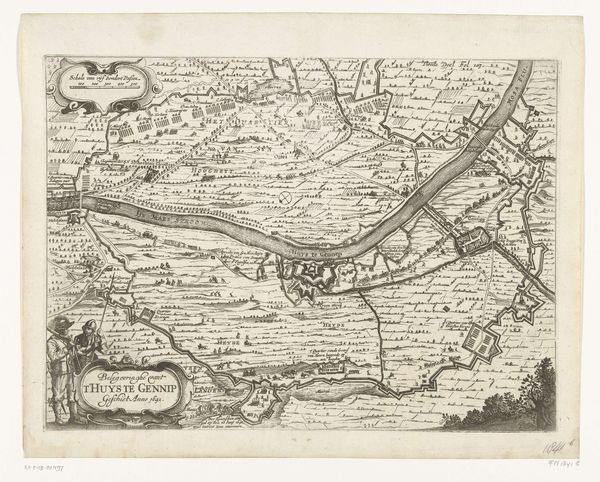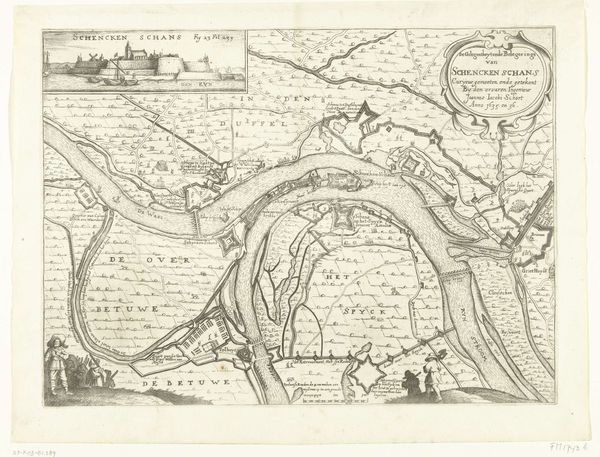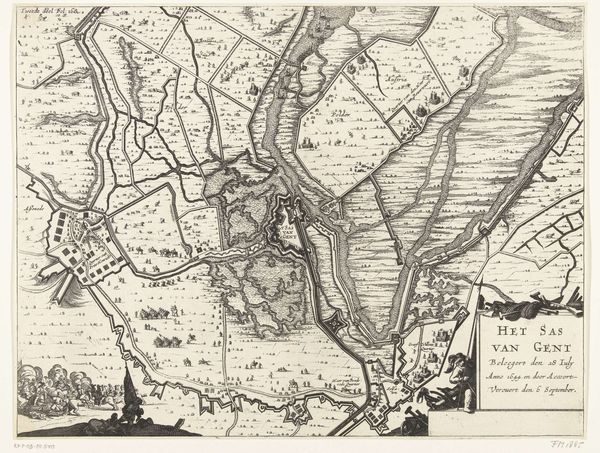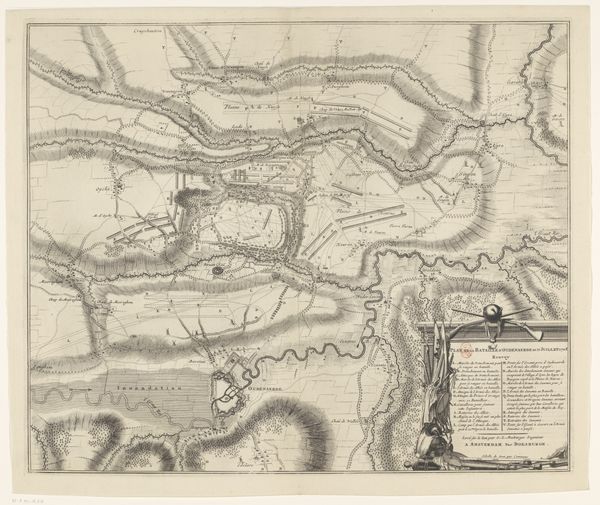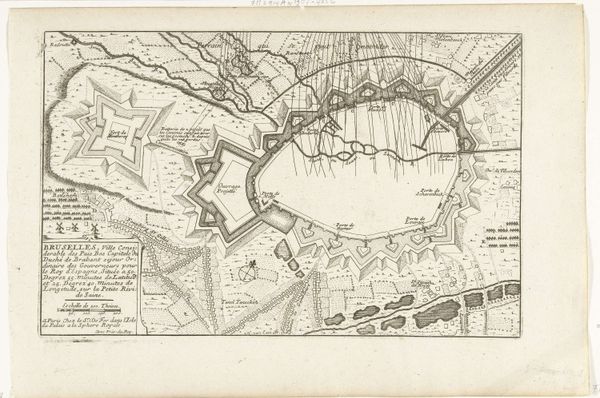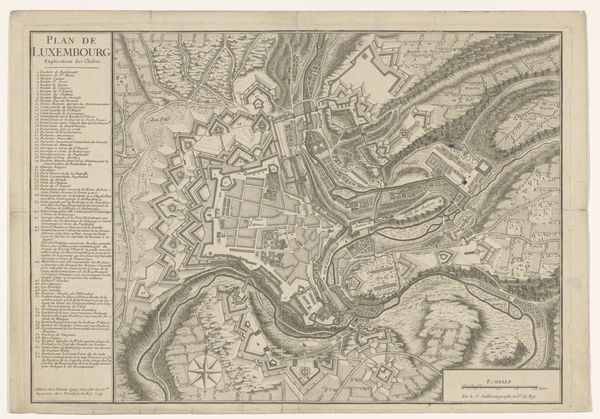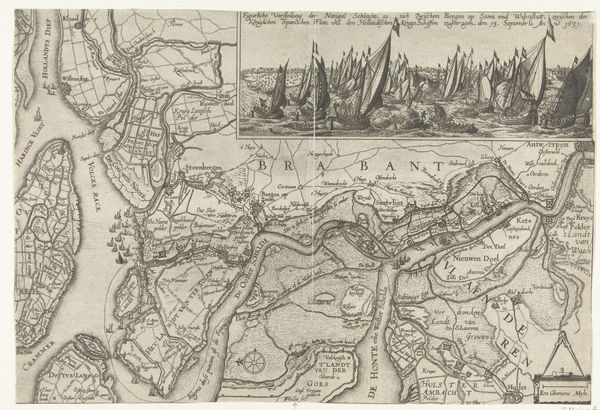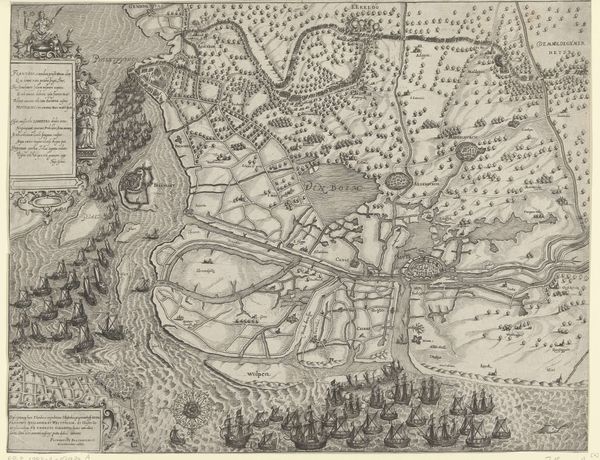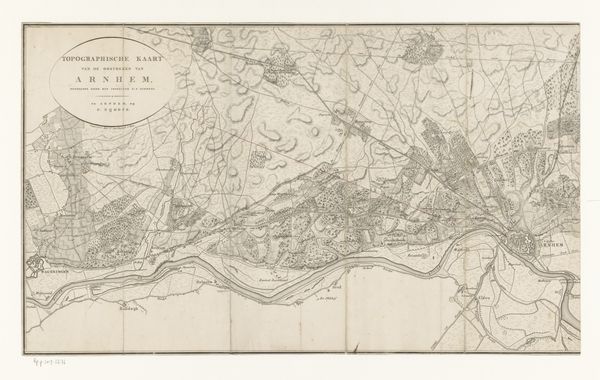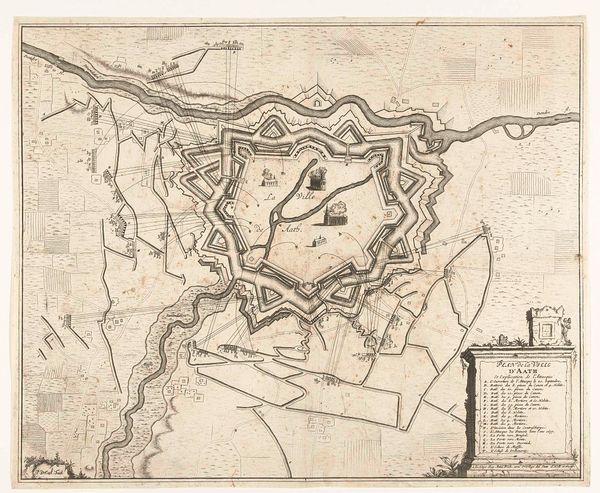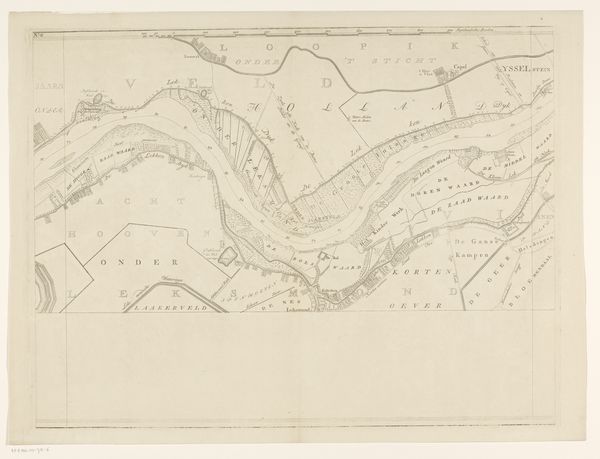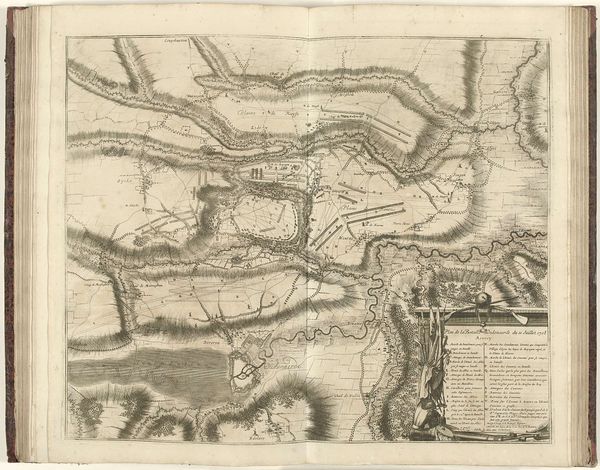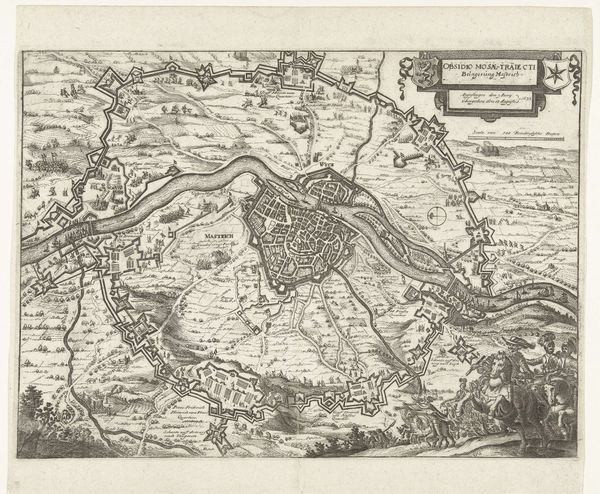
drawing, print, etching, ink
#
architectural sketch
#
drawing
# print
#
etching
#
landscape
#
etching
#
ink
#
geometric
#
botanical drawing
#
architectural section drawing
#
architectural drawing
#
cityscape
#
academic-art
Dimensions: height 514 mm, width 708 mm
Copyright: Rijks Museum: Open Domain
This is Romeyn de Hooghe's 'Plattegrond van Pavia', a map of Pavia made using etching. The materiality of this print speaks volumes. Etching is an indirect process. It's not like drawing directly onto a surface, but rather biting into it with acid. De Hooghe would have first covered a metal plate with a waxy ground, drawn his design into the wax, and then submerged the plate in acid, which would have eaten away the exposed metal. The depth of the lines, and therefore the darkness of the print, is determined by the amount of time the plate is left in the acid. This time-consuming, multi-stage process was ideally suited to the demands of cartography. Accuracy and detail were paramount, and etching allowed for precise lines and intricate shading. The resulting prints, like this one, were valued for their scientific and documentary value, but also for their aesthetic qualities. De Hooghe was clearly a master of the medium, using it to create a detailed and evocative portrait of Pavia. Remember that understanding the making process is key to fully appreciating the art and the social context in which it was created.
Comments
No comments
Be the first to comment and join the conversation on the ultimate creative platform.
